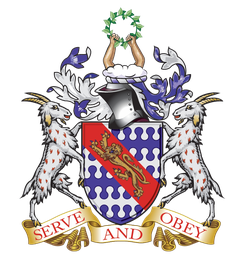
Sir Charles Hanbury Williams, KB was a Welsh diplomat, writer and satirist.

West Monmouth School is a state-funded and non-selective secondary school in Pontypool, Torfaen, south Wales.
Pontnewynydd is a predominantly working class suburb of Pontypool, Torfaen, in Wales. It should not be confused with Pontnewydd in nearby Cwmbran.

Daniel Granville West, Baron Granville-West was a British Labour politician. After establishing a successful solicitors practice, guided by Welsh baptist principles, he became a leading socialist in the post-war era. Baptised at the Tabernacle English Baptist Church, Monmouthshire, he remained a dedicated member all his life. Prominent in the opposition party during the Gaitskell period in 1950s and early 1960s, he remained committed to law and order in Wales, and nationalisation of the rail industry. He was horrified by the legacy of Imperial decline which he blamed for growing unemployment in the valleys.

Pontymoile is a large suburb of the town of Pontypool in Torfaen, south east Wales and a Community. It is all but merged with the nearby suburbs of Cwmynyscoy and Upper Race.
Viscount Tracy, of Rathcoole in the County of Dublin, was a title in the Peerage of Ireland. It was created on 12 January 1643 for Sir John Tracy, previously Member of Parliament for Gloucestershire. He was made Baron Tracy, of Rathcoole in the County of Dublin, at the same time, also in the Peerage of Ireland. The second Viscount also represented Gloucestershire in Parliament. The titles are considered to have become extinct on the death of the eighth Viscount in 1797. However, the peerages were the subjects of at least four claims presented to the House of Lords during the 19th century.

Henry Nevill, 2nd Earl of Abergavenny KT MA was a British peer, styled Hon. Henry Nevill until 1784 and Viscount Nevill from 1784 to 1785.
The Monmouthshire Railway and Canal Company was a canal and railway company that operated a canal and a network of railways in the Western Valley and Eastern Valley of Newport, Monmouthshire. It started as the Monmouthshire Canal Navigation and opened canals from Newport to Pontypool and to Crumlin from 1796. Numerous tramroads connected nearby pits and ironworks with the canal.

George Capel-Coningsby, 5th Earl of Essex FSA was an English aristocrat and politician, and styled Viscount Malden until 1799. His surname was Capell until 1781.
The Honourable Henry Hanbury-Tracy was a British Whig politician. He sat in the House of Commons from 1837 to 1838.

John Bateman, 2nd Viscount Bateman was a British politician who sat in the House of Commons from 1746 to 1784.
Thomas Charles Hanbury-Tracy, 2nd Baron Sudeley, known as Thomas Leigh between 1806 and 1838 and styled The Honourable Thomas Leigh between 1838 and 1839 and The Honourable Thomas Hanbury-Tracy between 1839 and 1858, was a British colliery owner and politician.
Watkin George (1759-1822) was an carpenter, engineer and ironmaster from Trevethin in Monmouthshire. He rose from humble beginnings as a carpenter to have a major influence on ironworks at Cyfartha and Pontypool and is responsible for the design of early cast iron bridges.
Sir William Keyt, 3rd Baronet of Norton House, Gloucestershire, was a British landowner and politician who sat in the House of Commons from 1722 to 1735. He died at his house in a catastrophic fire of his own creation and the garden which remained, and was restored, gave rise to the poem Burnt Norton by T. S. Eliot.














